20 Fascinating People
Aug. 19, 2016
Welcome to our third annual look at twenty of the most interesting people around. We’ve featured the likes of astronauts and ten-year-old prodigies, and this year we have a full-time Elvis, an arts legend, and one of the world’s best sailors. What all twenty all have in common? They call northern Michigan home.

Brittany Brubaker
The Up North Advocate
Petoskey resident Brittany Brubaker’s career experiences have redefined the word variety. She graduated college in 2008 and embarked upon a job teaching high school English. In 2011, she left that job to help open and run the Wet Mitten Surf Shop [now closed] in Traverse City, moving north from the Grand Haven area with her boyfriend (now fiancé) John McNeil.
"John owned Wet Mitten "¦ and I managed it, and through that experience of watching how a shop starts from nothing, I started feeling confident that I could do it too," she said.
Around that same time, she bought a house – "Almost on a whim!" Brubaker said – and turned it around rapidly. "I pulled more equity out of that house than one year’s salary," she said. "So that got my wheels turning."
Next came North Perk, Brubaker and McNeil’s Petoskey coffee shop that found its feet – and fans – almost immediately upon opening, thanks to its focus on quality coffee and friendly service.
"I’ve always been drawn to coffeeshops because they are hubs," Brubaker explained. "Places to meet, think, work. Downtown Petoskey has been so amazing to North Perk, so as a young business owner, I’m committed to offering things of value to our area."
Among those things is yet another undertaking for Brubaker – a new socio-professional group. "Some of us had been talking about the fact that there was a missing niche north of Traverse City for young professionals (YPs) to network and thrive," she explained. "So Thrive 45 is a strong group of YPs in the area having important conversations about housing, workforce, and economy, and also bringing in meaningful speakers for professional development."
Brubaker and McNeil also just opened a real estate company called Coastal North Realty. "I know it sounds crazy on paper, but it works really well with everything else we’re doing," Brubaker said.
Despite all her forward momentum, she hasn’t left her love for water behind. "All summer on Mondays I organize and take out a group of women stand-up paddleboarding," Brubaker said. "But instead of work, that’s now my downtime."
And through it all, she continues to be an advocate for northern Michigan. "Because, can you think of a more perfect place to be?" she asked. "It’s the best blend of natural beauty and fun, active people, with real opportunities for being part of a growing economy and making your mark."
– Kristi Kates
{::PAGEBREAK::}
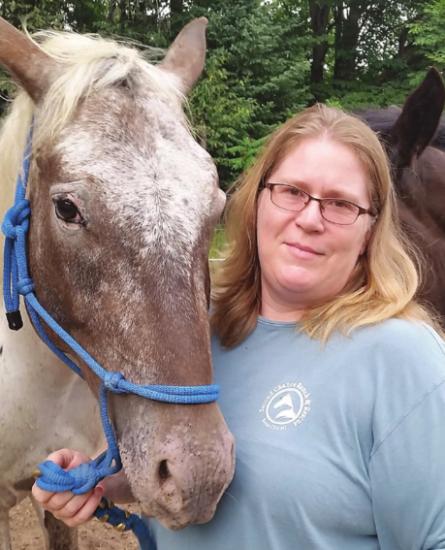
Erika Hayden
Comforter of Animals and People
Erika Hayden heard people mention the healing technique Reiki over and over again until it sounded like a calling.
"I heard about it three different times, and when something keeps coming back to you, it’s time to investigate it, and that’s what I did," Hayden said.
That was over a decade ago. She’s been practicing the wellness therapy ever since. In Reiki, a practitioner typically places their hands on or near a patient’s body with the intention of channeling the energy of the universe to help the patient help him or herself. There are numerous Reiki practitioners around northern Michigan, but Hayden stands out because she also applies the Japanese healing art to animals.
Hayden was first moved to work with animals when she learned of a group of rescued horses.
"I asked the gal if I could come out and do Reiki, and she said sure," she said.
The horses seemed to respond, especially one in particular that kept returning to her. Hayden said each of the animals seemed to know how to position themselves so that they could benefit from the positive energy. She said she didn’t feel like she was offering the suffering animals any kind of miracle cure, but that she thought she was making them feel better, and that was enough.
"You’ve got to remember, these horses were just seized from a neglectful situation, so any kind of calming is going to be helpful," she said.
Hayden doesn’t keep an office for her Reiki practice – she often borrows a friend’s massage studio in Boyne City – and she also works a full-time job. But she continues to make time to use Reiki to help other horses, as well as dogs, goats and, of course, humans.
– By Patrick Sullivan
{::PAGEBREAK::}

Tanya Whitley
Bus Driver, Icon Maker
Tanya Whitley is a Charlevoix Public Schools bus driver by day. In her free time, she’s created over 100 microbrew bottle labels, including one of the most iconic ever made.
Whitley hopes one day to turn the cachet she’s accrued as the artist for hip microbreweries into a career as a fine artist, but for now she’s satisfied with the unusual outlet she’s found for her artistic expression.
Whitley’s beer bottle business began when her brother-in-law worked at an ad agency downstate and landed the Founders Brewing Co. account. He hired Whitley to design what is now one of the country’s most ubiquitous craft brew label designs – the weathered Jeep Wagoneer with a canoe on top which is featured on Founders’ All Day IPA, the best-selling session-style craft beer in the country.
Another family connection – her nephew, a brewer – brought her to the attention of Short’s Brewing Company in 2012. So far, she’s created labels for over 100 of the brewery’s creative concoctions.
"They come up with the titles for the name of the beer, and they always have something in mind," Whitley said. "They always have little details, like, "˜We need a guy riding a grizzly bear.’" Whitley grew up in Toivala, a tiny town near Houghton in the Upper Peninsula. After receiving a fine arts degree, she moved to Nashville with her husband, a native downstater. But soon the couple, missing their
home state, returned to Michigan, settling in Charlevoix – halfway between each other’s families. Despite their distinction and value within the beer industry, labels alone don’t pay the bills, so several years ago Whitley took a job as a school bus driver so she and her husband could put their two children through college.
"I’m hoping now that my kids are becoming more independent, I’ll have more time for my own work," Whitley said. No doubt, the craft brewing industry is counting on it.
– By Patrick Sullivan
{::PAGEBREAK::}

Marty Lagina
Treasure Hunter
Whether it’s red wine from grapes grown on the Old Mission Peninsula or legendary treasure from Canada’s Oak Island, Yooper-turned-Traverse City resident Marty Lagina refuses to acknowledge the meaning of the word impossible.
Along with his brother Rick, Lagina has recently turned his fortune – produced first in the natural gas boom and later through solar-power development – toward finding the long-lost treasure of the Nova Scotian island. Their quest has become the subject of a hit History Channel reality show The Curse of Oak Island.
This spring he opened Mari Vineyards, a technologically advanced winery hidden within a sprawling old-world estate inspired by northern Italian architecture.
Lagina said the expense of Mari Vineyards is justified because he believes he will be able to do what other winemakers have not – make a world-class red wine in northern Michigan.
"This wouldn’t have been justified if it weren’t for that," Lagina told the Express last fall. "The reason why I was willing to make this investment is because we’ve been growing grapes for 15 years, and I think we’ve got it right."
Northern Michigan might share the same latitude with the best wine-growing regions in the world – daylight hours on Old Mission are the same as they are in Bordeaux, France – but in Michigan, grapes don’t get as much heat, which means they don’t ripen as much.
Lagina developed a system he calls the Nellaserra – that’s Italian for greenhouse. He’s built structures that extend over rows of grapes, intensifying the heat received by the grapes, plus extending its impact two weeks before and four weeks after the typical growing season.
As for whether Lagina and his brother ever find that treasure on Oak Island, you’ll have to tune in to season four of the television program, which is filming this summer.
– By Patrick Sullivan
{::PAGEBREAK::}
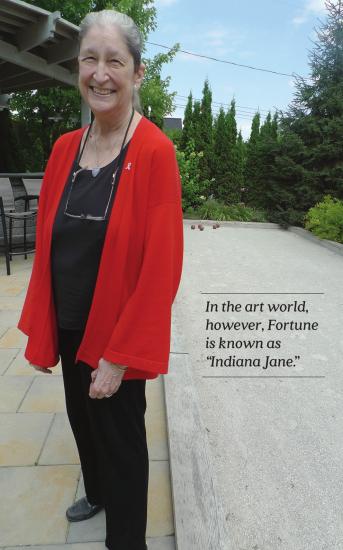
Jane Fortune
Leelanau’s Patron of Lost Women Artists
On a Leelanau County summer evening, Jane Fortune might look like any other welloff seasonal resident of northern Michigan.
She co-owns Bella Fortuna North in Lake Leelanau, and she likes to mingle with the customers.
In the art world, however, Fortune is known as "Indiana Jane."
She hunts down and preserves lost treasures – particularly pieces by women artists whose work has ended up in storage in Florence, Italy.
Fortune, whose family has spent summers in Leelanau for generations, spent her junior year in Florence.
"I said at that time, because it made such a profound impact on me, that I’d give back to the city of Florence one day," Fortune said.
Decades later while visiting the Italian city, Fortune happened upon a painting by an obscure artist whom Fortune didn’t believe deserved obscurity.
"Nobody knew her. Not one person knew who she was, and she was the first known painters of Florence," Fortune said. "So I started doing research on works of art by women."
For the past dozen years, Fortune has made a second career out of researching the lives of women artists and discovering and preserving their work. (She spent her first career as a philan-thropist for charities in the United States.)
The work has led Fortune to write several books. One of them, "Invisible Women:
Forgotten Artists of Florence," was the basis for a PBS documentary that won an Emmy in 2013.
The satisfaction Fortune finds in uncovering lost works is what drives her.
"It’s phenomenal. It’s an incredible thing to find a piece of art that had been languishing," For-tune said. "You can make it alive again – you return it, and you put it on a wall. It’s an amazing thing."
– By Patrick Sullivan
{::PAGEBREAK::}

Elnora Milliken
The Girl With the Violin
Elnora Milliken watched Traverse City grow from the windows of the mid-century home she and her husband built on the shore of West Grand Traverse Bay.
She’s watched buildings go up and buildings come down. (Her husband was the lone city commissioner in the 1960s to oppose the construction of a power plant where the Open Space is today.)
Milliken, widow of Dr. John Milliken, and sister-in-law of Gov. William Milliken, is responsible for much of Traverse City’s cultural growth since the 1950s, the decade she moved here. In addition to starting the Traverse Symphony Orchestra, she helped launch the Old Town Playhouse.
Work on the symphony began almost as soon as she moved to town.
"I’d played with the Dallas Symphony, and I’d played with the Kalamazoo Symphony, and I’d played since the fourth grade in Minne sota," Milliken said. "I was known as the girl with the violin."
She had expected she would continue to play in Traverse City and was shocked to learn there was nowhere to perform.
"I asked the girls at the musicale what day the symphony rehearsals began," she said. "I thought I’d just die without a symphony."
Milliken set out to raise $5,000, which would cover one year’s salary for a symphony conductor. She did, and the symphony played its first concert in December 1952.
Shortly thereafter, Milliken noticed another hole in the cultural fabric of Up North: community theater.
Traverse City had long had venues for traveling theater groups to stage their productions, but Milliken wanted to launch an enduring local institution, so she helped start the Old Town Playhouse. The company staged its first play, "You Can’t Take It With You," in 1960, with Milliken in a leading role. It moved into its current home, the former First Christian Church, in the 1970s.
– By Patrick Sullivan
{::PAGEBREAK::}
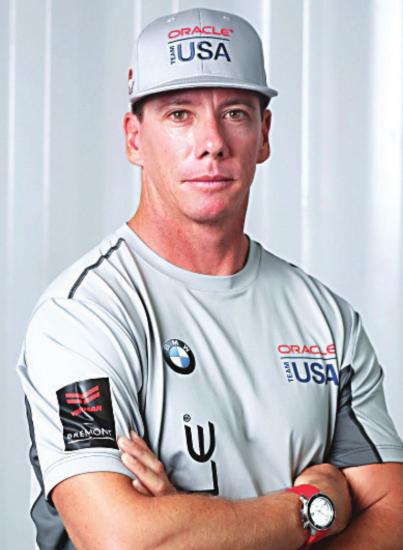
Matt Cassidy
The America’s Cup Sailor
Catching Matt Cassidy on a rare two-week break was pure luck. The accomplished sailor has been on an upward trajectory for years, upscaling his sailing career to its current pinnacle: the 2017 America’s Cup race.
Cassidy got his start sailing as a kid in Harbor Springs. "My dad had a seasonal business, so we’d spend six months in Florida, then six months in Michigan, like clockwork," Cassidy said. "My parents put me in the summer sailing program in Harbor Springs to keep me busy – and kind of as a substitute for day camp. And I absolutely loved it."
He spent all of his childhood summers in the sailing program there, and after high school, while attending the College of Charleston, in North Carolina, he began working as a sailing coach with the Harbor Springs youth race teams.
After earning his business degree, he went on to coach sailing in San Diego, a move he thought would be temporary at best. "But I kept meeting different people and getting opportunities on really good professional sailing teams," he said. "At first it was just fun, but it gradually became a full-time job."
He continued to travel for sailing races, hitting some of the top races in the world as a bowman on the Grand Prix sailing circuit, and notching over 30 world and national championships.
Before long, Oracle Team USA – the elite racing syndicate backed by Oracle Corporation’s Larry Ellison – snapped up Cassidy for its team. Oracle Team USA is the current defender of the America’s Cup.
Cassidy and his wife relocated to Bermuda, where he’ll train with his teammates until the 35th America’s Cup race in 2017 – a process he describes as "intense."
"We have strength and boxing trainers, a physiotherapist, and a nutritionist," he explained. "We spend from 7 to 9am every weekday morning in the gym and sail for at least four hours in the afternoons. If we’re not out on the water, we’re back in the gym."
Team Oracle has been participating in all the series races that run up to the big America’s Cup event in Bermuda next June, in what amounts to three years of prep for two weekends’ worth of racing.
"It’s a big deal," Cassidy said. "That’s when we’ll see if all the decisions we’ve made leading up to that point were the right ones. But America’s Cup is it – it’s the pinnacle of our sport of offshore sailing. Representing the U.S. and being a part of this team is a dream come true."
– Kristi Kates
{::PAGEBREAK::}
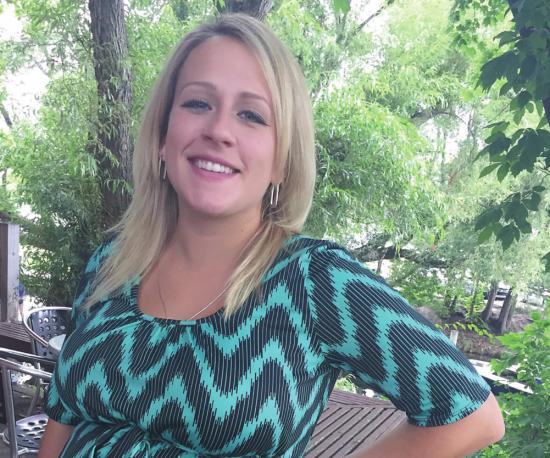
Samantha Harris
Real-Life Ghostbuster
If Samantha Harris had one complaint about the new Ghostbusters movie, which she enjoyed, it was that it was a bit far-fetched.
"It gets people talking about this field," she said. "The downside of it, I think, is that sometimes it will portray unrealistic phenomenon."
Harris, founder of the Michigan Paranormal Research Association, is a real-life ghostbuster. Harris recognized at a young age that she possessed psychic abilities. She began to study the paranormal at age 11, and by age 17 – a decade ago – she began to help people rid spirits from their homes Harris published a 2014 book called "Fighting Malevolent Spirits: A Demonologist’s Darkest Encounters," and she’s appeared on the television shows Haunting, Paranormal Survivor, and the Travel Channel’s Most Terrifying Places in America.
Harris calls the rituals she utilizes to cleanse a house of evil spirits "home blessings," and she’s quick to point out that, though she doesn’t charge clients for her work (she makes a living as a photographer and videographer), her house blessing isn’t a party trick – it’s serious business.
This year she’s taken time off as she and her fiancé await their first child, a son, due in October.
Harris said going to battle with evil spirits is dangerous and disconcerting work. In one recent case, while she was in communication about an evil spirit, the brakes on her fiancé’s vehicle were mysteriously cut, the couple had an infestation of hornets, and bottles and silverware inexplicably flew around their house – trouble she suspects originated with an irritated spirit.
But Harris said that when the rituals are successful, which she said is almost always, there is a tangible change in the home and so much satisfaction.
"When we’re doing a house blessing, a minor exorcism, you can feel [the spirit] leave," she said.
– By Patrick Sullivan
{::PAGEBREAK::}

Jake Slater
Full-Time Elvis
When Jake Slater got into Elvis when he was just seven years old, he knew liking Elvis wasn’t exactly cool.
"I always sang along with the music, but I was really shy," Slater said. "In fact, I didn’t want to tell my friends at school that I was an Elvis fan because I was afraid I was going to be picked on."
His hunch was correct; Slater was picked on a bit when classmates found out. But it didn’t deter his love for the legendary performer. That only grew – so much so that, at age 16, Slater began impersonating Elvis. At first, even his parents were wary; they were classic rock fans.
"Basically, I grew up around ’70s classic rock. My parents liked all those kind of bands – The Beatles, Moody Blues, Led Zeppelin, Pink Floyd," he said. "But I had always had a taste for older music."
After a neighbor heard Slater singing as Elvis at a party, he nabbed his first official gig, at the American Military League hall in Traverse City.
Slater started out believing people were just being polite when they told him he looked and sounded like Elvis, but after that first show, he saw things differently.
He’d hunted through thrift shops to find old clothes that would help him look the part, but at that first show, a lady was so impressed with his performance, she offered to sew him some rhine-stone-studded jump suits.
Today Slater makes a living impersonating Elvis. He travels around the state, has played shows in Florida and Canada, and this summer, is playing 28 "customer appreciation" concerts at Blarney Castle Oil gas stations around Michigan.
"I’ve definitely made a nice career out of something that I did not expect at all – it just kind of fell in my lap really," he said.
– By Patrick Sullivan
{::PAGEBREAK::}
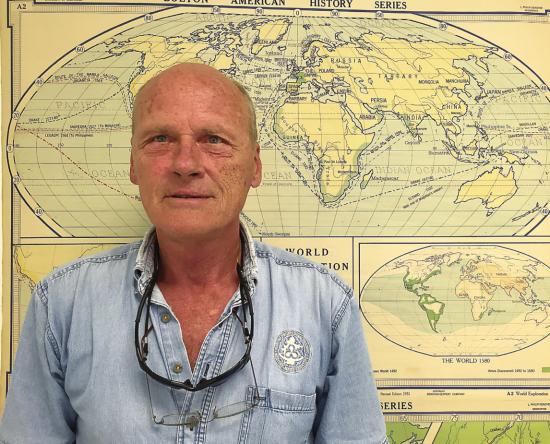
J.B. Collings
The Man On The Sea
When it comes to world travel, ocean ship captain J.B. Collings of Traverse City has pretty much seen it all.
One of his favorite travel tales? It happened when he arrived in the Liberian port of Monrovia, in West Africa.
"The mayor, accompanied by nine other guys, marched onto the ship and asked, "˜Where are our Christmas gifts?’ meaning, where’s my bribe?" Collings recalled. The mayor controlled the harbor.
"So the crew filled 10 big trash bags with cleaning products – just no food. The mayor and his pals were happy," Collings said. "As they walked down the gangplank, one of those guys opened his bag, lifted his shirt and sprayed Lysol on his armpits."
Those were the funny, weird moments. But the NMC Maritime Academy graduate also saw some unforgettable tragedies, like whole shiploads of food sent to feed starving East Africans that simply disappeared from the docks. In Egypt, he saw two stevedores killed when a pallet dumped 80-pound sacks on them from 100 feet above. "The others just threw the bodies in a corner and kept on working," he said. And he visited more than his share of conflict areas, including the Somalian capital of Mogadishu, the site of the incident upon which the film the Black Hawk Down is based.
The list of ports he’s visited is long – stops all over Europe, Central and South America, the U.S. Gulf Coast, the eastern stretches of the Mediterranean Sea, Sri Lanka, and Pakistan.
But when his father’s health began failing, Collings decided to pull up anchor and head to Traverse City, where he works on the Manitowac, a 640- foot Great Lakes freighter. He said he looks forward to his final sail into the sunset: retirement.
– Clark Miller
{::PAGEBREAK::}

Billy Strings
The Wandering Guitarist
He showed up unannounced in Traverse City four years ago – an unexpected and complex presence with a myriad of tattoos, vintage voice and old-school manners – and the ability to flat-pick on the guitar in a blaze few had seen before, especially from someone not yet 25 years old.
Born William Apostol in Ionia, Mich., Strings was surrounded by music from birth. He grew up playing guitar with his dad, accomplished musician Terry Barber, and would often attend his uncle’s pickin’ parties, where everyone would sit around playing music together.
"My dad was my teacher and my mentor," Strings said. "He’s an amazing guitar player, and he spoon-fed me bluegrass since I was a kid."
Strings’ arrival Up North would happen on a whim.
"I’m one of those people who get an itch and just have to move," he explained. He’d just graduated high school and felt the need to explore, so he snagged a job as a bellboy at Grand Traverse Resort and started playing music around town, most notably at open mic night at The Hayloft in Traverse City, where he stunned the crowd his first night there.
In a short time, Strings’ reputation as a great and collaborative musician got around, and he happily performed with anyone whose sound struck his fancy. His partnership with Traverse City-based mandolin player and businessman Don Julin is one in particular Strings credits with helping him evolve.
"He sure did get us gigs," Strings said. But as happens with all wandering musicians, Strings got that itch again. He recently headed to Nashville, where he’s continuing his climb into professional music by putting together a three-piece bluegrass/new-Americana backing band and hitting the road to tour. He’s also planning out the recording of an EP, which he called "a batch of stew" waiting for its final ingredients in the form of inspiration.
"There are so many people just like me in Nashville, especially guitar nerds," he said. "I’m exposed to phenomenal musicians all the time now. These people pick circles around me. And that’s how I’m going to learn and get better."
Is he facing a challenge in the current musical climate of electronic dance tracks and overproduced country music? You’d never know it looking at Strings, grinning ear to ear with guitar firmly in hand and a wisdom far beyond his years.
"Whatever you do," he said, "you just gotta put your heart and soul into it."
– By Kristi Kates
{::PAGEBREAK::}
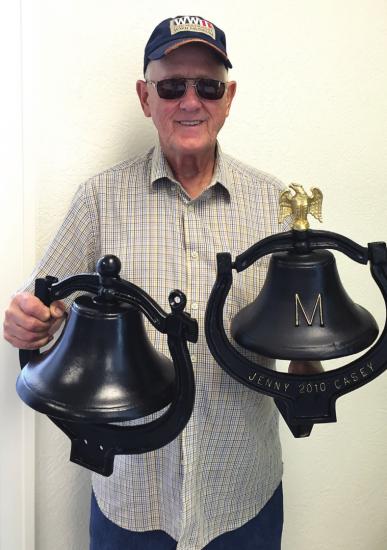
Mike Winters
The Bell Maker
Back in the ’70s, Mike Winters was working at the nowdefunct Traverse City Iron Works when one of his co-workers brought in a metal bell and an idea.
"We used that first bell as a pattern to make another bell for each of us," Winters said. "We tried iron, but that didn’t work very well. So I decided to make mine out of aluminum. We were surprised at how well it rang!" What started as a frivolous way to pass a slow workday would actually set a new life course for Winters.
"The Iron Works were nice about letting us each make one, but they didn’t want us making them for all our cousins, you know," he said. "But I grew up on a farm, and I liked having bells around. So I set up a small foundry at my house and just kept going."
Working with aluminum heated to a liquifying 1,400 degrees Fahrenheit, Winters figured out how to craft sand and clay moldings to cast his bells. Once his friends and family saw the results, he found himself in high demand – not as an iron worker, but as a bell maker.
"One person asked to buy one, then one thing led to another," he explained. "Next thing you know, I’m out at the Buckley Old Engine Show, making bells on the spot. That was the turning point – I sold so many bells at that show! And that put me on the road to being a bell maker, full-time."
Winters is now retired from iron working, and with the help of his wife, Joyce, and other family members, he has watched his bell-making business thrive. The old-school artisan doesn’t have a website (although he does keep a listing on Facebook) because he said the bulk of his business comes from the engine show and major word of mouth.
"I’ve shipped bells to pretty much every state, and to over a dozen foreign countries," he said. "Peru, Brazil, Portugal, the Philippines. It’s neat. I even just saw a photo of one of my bells in India."
The rewards of the job ring true for Winters; he said the best thing about being a bell maker – "Besides going to the bank," he added – has been watching his bells go out into the world, especially to missionaries.
"That’s where they’re supposed to be," he said.
– By Kristi Kates
{::PAGEBREAK::}
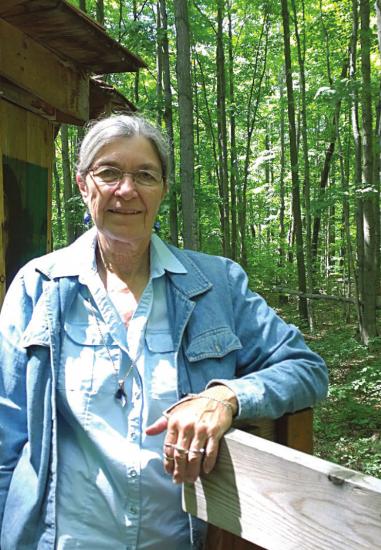
Cheri Leach
The Science Connector
Raven Hill Discovery Center in East Jordan turned 25 years old this year. It’s a place where northern Michiganians and visitors alike go to meet amphibians and other animals, explore how technology has evolved, take on a project in the fiber studio or print shop, view replicas from ancient civilizations, and participate in hands-on activities with light, sound, motion, magnets, earth sciences, and more, all in carefully curated environments.
And it all began with one woman: Cheri Leach, the center’s founder, who started Raven Hill with her husband, Tim Leach, who has since passed away.
Cheri Leach’s initial career trajectory actually took several turns before she created her own calling. "My dad was a doctor, and I always thought I’d be a doctor too," she said. "But as I got into college, I realized that I liked teaching so much better, so I changed my major."
Armed with a master’s degree in science education, Leach went out into the world and taught in Jackson, Mich., Nebraska, and Florida, eventually moving to East Jordan to teach at Boyne City Public Schools.
Once school let out for summertime, she’d bring her classroom’s animals and reptiles home.
"All the neighborhood kids and my friends’ kids wanted to meet the animals," she said. "So Tim and I thought, wouldn’t it be great to have a bigger place to keep all of them, kind of like a day camp?" They decided to act on their idea, utilizing her teaching and science experience and Tim Leach’s art and biology background. And Raven Hill Discovery Center was born.
Today, Leach continues the couple’s legacy, using informal education and hands-on experience to welcome over 10,000 visitors a year to the center.
She’s at the center constantly, always seeking new ways to connect science, history and art.
"It’s a challenging combination," she said, "but it allows us to explore other cultures as well as traditional science topics, and gives people more room to grow and learn, whether adults or kids." "Then again, everybody’s a kid at Raven Hill," she added.
– By Kristi Kates
{::PAGEBREAK::}

Tommy Tropic
The Street Performer
To many locals, it seems like Tom Petrie has always been "Tommy Tropic." A native of East Jordan, Petrie learned to juggle when he was 10 years old. As a he grew, he made a career out of his art, expanding his skills to wow patrons as a jugging bartender for several years in San Diego, Calif., before returning to Michigan to ply his trade at the Dilworth Hotel in Boyne City.
Since then, his unicycle-riding, joking, juggling alter ego Tommy Tropic has been an icon around northern Michigan for the better part of 30 years. Although he’s performed at literally thousands of events and festivals, he revealed that getting started as a street performer took as much nerve as it did talent.
"I started by crashing festivals in the early years," Petrie said. "I’d just show up and do a show! Sometimes they’d kick me out, but more and more, they’d see what I was doing and offer me a gig."
He was there at Traverse City’s very first Friday Night Live, passing a hat to earn some cash; he did the same at Alpenfest, the Boyne City Mushroom Festival, the Boyne Falls Polish Festival, and the Wolverine Lumberjack Festival.
"Using that method, I’d managed to perform at most of the events up here," he said.
"Then I met Crazy Richard (Blissfest’s resident "mad juggler"), and he got me my first legitimate shows."
As the buzz about Tommy Tropic traveled beyond northern Michigan, he was able to snag shows in Key West, Fla., and the Caribbean in the winter, and he soon acquired a downstate agent, Dean Rush. Today, Petrie performs almost constantly and is also producing a show, Buskermania!, with his own troupe of street performers.
Although Petrie’s skills and humor have no doubt fueled his success, he’s quick to credit Rush for his packed performance schedule.
"He’s the one who started booking me into corporate events – for Dow-Corning, the NHL, Microsoft, all the big car companies," Petrie said. "I finally got so many gigs that I could quit my day job. And I love it. I like to see people having fun, and I love to hear them laugh."
– By Kristi Kates
{::PAGEBREAK::}

Owen Chesnut
The Expat Archaeologist
As a kid, Charlevoix resident Owen Chesnut whiled away many an hour reading about different time periods. But it wasn’t until sixth grade that he realized digging into history could actually become a career.
"My father took me to the home of the head of the anthropology department at SUNY Albany, where the professor had a room that was essentially his own personal museum," Chesnut said. "He explained to me what archaeology is and how one could pursue it. From that moment, I was hooked."
After graduating from high school, Chesnut studied archaeology in Chicago, Israel, and Michigan. He’s an adjunct professor at NCMC in Petoskey, planning out a trip for his students to a field school in Israel next summer. While he enjoys teaching, it’s history that truly speaks to him. Having having lived in both Israel and Jordan, he’s found a personal connection to the lands and their people, and he returns each summer to continue work on various archaeological digs.
"I love and care deeply for the people of Israel, Jordan, and Palestine," he said. "This keeps me going back."
Chesnut is currently finishing up a dig season at Tall al-’Umayri in Southern Amman, where he’s a field supervisor on a project excavating a defense fortification system from the late Bronze Age. He’s also head archaeologist for the Ashdod-Yam site in Israel, just south of Tel Aviv, where the dig is focused on the Hellenistic period and the late Iron Age.
Every dig season brings unexpected finds for experienced archaeologists like Chesnut but also to those new to the field.
"My first season digging in Israel was at the Philistine city of Gath [Tell es-Safi]," Chesnut said. "I had just been taught the proper way to swing a pick axe, and with my first swing I popped out of the ground a complete juglet [small ancient container for liquids] dating to around 800 B.C.E."
And if you think that archaeologists careen around foreign lands having escapades – well, you’d be partially right.
"There is plenty of adventure," Chesnut said. "Doing archaeology is a great opportunity to travel to exotic locales and interact with people from diverse cultures. I’ve slept out in the southern desert of Jordan in a Bedouin tent, taken Jeep rides through the Sinai to abandoned copper mines, ridden camels into the desert of Egypt to explore abandoned monasteries, and so much more."
The most rewarding thing about teaching archaeology, he said, is seeing someone’s face the first time they find something while digging.
"But the thing I love most about archaeology is that it really is applicable history," he added. "It’s almost like you’re an historical detective."
– Kristi Kates
{::PAGEBREAK::}

Craig Webb
Special Ops Accountant
The first thing you notice about local accountant Craig Webb is that he’s physically fit. But nothing in his relaxed demeanor suggests he has endured some of the most grueling special ops training in the world.
In his 20s, as a member of the elite Marine Force Recon company, he became a combat diver, high altitude military parachutist, and weapons expert skilled in hand-to-hand combat and reconnaissance.
It was a very select club. "Out of some quarter million Marines serving at the time, only 60 Marines qualified. My instructor flunked the previous 80 Marines who tried out," he said.
As a member of Force Recon, Webb trained constantly, often with other special ops forces. A jungle training mission in French Guiana, for example, included SEAL Team Six and French Foreign Legion members. His platoon also completed the particularly ominous-sounding FBI Quick Kill course.
So how does a guy with that background end up as an accountant? "The Corps doesn’t like to lose people who have all that training," he said. "But I always wanted to go back to college."
He chose Michigan State University, where discovered a talent for accounting.
Webb still retains the same competitive streak that got him into Force Recon. He is on the Hagerty bike team and competes in fat tire bike races and cross-country skiing events. He won three triathlons in 2013. He has strong local ties. His wife, Laura Webb, is a nurse at Munson, and his parents, Patricia and Dr. Charles Webb, also live here.
– Clark Miller
{::PAGEBREAK::}

Therese Renis
Nuclear Proliferation Preventer
Traverse City native Therese Renis got her first taste of international life as a Rotary exchange student in what’s now Zimbabwe when she was a high school junior.
After, she travelled Europe. She participated in Model U.N. She thought she might become a social worker.
All the while, her father nudged her toward engineering, however. She was an ambitious and bright student and she decided to start her college career at Northwestern Michigan College while she saved money to attend an engineering program at the University of Michigan.
"I didn’t explicitly set a goal of having an international career, but I did know that my career would most likely take me away from Traverse City and perhaps Michigan," Renis said in an email interview from Vienna, Austria, where she is the director of the Division of Concepts and Planning, Department of Safeguards at the International Atomic Energy Agency.
Renis got a graduate degree in California and lived in San Francisco for 10 years before she took a "temporary" position with the IAEA as a nuclear laboratory engineer.
A quarter century later, she’s moved up in the ranks, and today she still works for the agency that stands on the front lines of preventing the proliferation of nuclear weapons.
Renis noted that in addition to nuclear nonproliferation, the IAEA promotes the safe and peaceful use of nuclear science and technology.
In 2005, Renis was a member of a team that won the Nobel Peace Prize for their work in preventing militarization of nuclear energy programs.
"My colleagues and I were surprised and delighted at the announcement; it was an emotional day and provided a huge morale boost," Renis said.
Renis visits northern Michigan as often as she can. In May she was named Outstanding Alumni at NMC. And though her daughters were born in Austria, they consider Michigan to be "where they are from in the U.S." Her parents live on Elk Lake and she still has friends in Traverse City and hopes to return in retirement.
"I still consider it home," she said.
– Patrick Sullivan
{::PAGEBREAK::}

Thomas Renkes
Redemption Writer
Northern Michigan author Thomas Renkes has written five books under his own name and the pen name Stewert James.
Among them: a three-book series called "Super Pac," a line of thrillers steeped in the wild exploits of U.S. politics contemporary events, and "Writing With Hemingway," a hodgepodge of short stories penned while sitting on the same barstool at Petoskey’s City Park Grill, where Hemingway was known to have drank as a young man.
Renkes’ career as a writer began after his career as a registered nurse and nurses union leader imploded. The former executive director of the Alaska Nurses Association (AaNA), he was charged and convicted of embezzling from the labor organization in federal court in 2010 and sentenced to probation.
Renkes says he’s in the process of "recovery" from those events and doesn’t like to talk about them.
He does say, however, that his experience working for unions gave him a unique window into high-level political deals, providing an education that served as the basis for his "Super Pac" novels. Each tale in the series tackles the political corruption endemic in the aftermath of the Citizens United Supreme Court decision, which opened a floodgate of money into politics.
The books are of Petoskey, Renkes’ current home. Each one begins at the city’s Roast and Toast and ends in a car.
Renkes said becoming a writer was a way to rebuild his life after the low point of his criminal case, a situation he blames on political revenge for the work he did to unionize nurses.
– Patrick Sullivan
{::PAGEBREAK::}

Elise Hayes
The Ski Matriarch
In 1958, Norman "Nubby" Sarns and his wife, Dorie, opened a small ski hill near Harbor Springs, to entertain friends and family. In honor of Mr. Sarns, it was nicknamed Nub’s Nob.
By 1977, the Sarns sold their modest winter playground to the Fisher family.
Although she didn’t know it then, Walter Fisher’s daughter, Elise Fisher (now Hayes), would find her family’s resort playing a pivotal role in her future.
"I started going there just as a family member," Hayes said. "But with my background – I’d gone to U of M and achieved an MBA in business – I began gravitating toward more of a leadership role."
Her father, Hayes explained, was such a good mentor, it was natural for her to be drawn toward the business side of the little resort.
"It just kind of evolved as we went," she said. Not long after her family purchased the resort, Hayes met her future husband, Rip, on one of the ski resort’s chairlifts. The couple’s commitment to the resort that brought them together only grew.
Soon Hayes began overseeing special projects at Nub’s, with an ongoing aim to help make her family’s resort the best it could be well into the future.
Her achievements at Nub’s to date include expanding the resort’s ski store, planning and supervising special events, and the project she’s most enthused about lately, Nub’s Nob’s new promotional campaign.
"We just put together the most wonderful publication for Nub’s," she said. "It’s all about the resort, but it’s so much more than just a brochure – it’s more like a coffee table book or an upscale catalog."
She also assists her husband in running one of Nub’s most popular events, its annual Mardi Gras, which he spearheads each year.
"I have to give Rip so much credit," she said. "He’s right out there during Mardi Gras, really being the face of Nub’s Nob, whereas I’m more behind the scenes."
She does make rounds throughout the resort, keeping a friendly eye on staff and skiers alike and making a point to meet guests. But Hayes most often can be found in her office, which is tucked right under Nub’s iconic clock.
"I’m more of an overseer," Hayes said with a chuckle. "I think my biggest contribution to Nub’s, or to any organization [Hayes is also on the foundation board at McLaren Northern Michigan Hospital], is my willingness to listen to people and do what’s best for everyone, so that we can all work as a team. It’s all about the people."
That especially applies at Nub’s, where she holds fast to an elegant yet sturdy determination to keep the resort’s mom-and-pop ambiance intact, while still making sure everything on site is state of the art.
"It absolutely has to feel comfortable and nostalgic here, like you ’d expect an old ski resort to be," she said. "But underneath, it’s all wired and ready to go."
– By Kristi Kates
{::PAGEBREAK::}

David Johnson
Man of Big Ideas
He once traded islands with the State of Michigan. He fought the British Virgin Islands government. He’s responsible for the largest land reclamation project in North America.
He’s David Johnson, serial entrepreneur, owner of resorts for the uber wealthy, and generally a man of big ideas.
Johnson, developer of Petoskey’s sprawling Bay Harbor development, got his first taste of business while a Michigan State University student. He and two partners purchased an underperforming gas station not far from campus and, by the time he graduated at age 22, Johnson owned and operated seven gas stations in greater Lansing. He was hooked.
Eventually Johnson’s sights settled on five miles of Lake Michigan shoreline long scarred by mining and a cement plant. From that industrial history rose one of the world’s most exclusive residential, golf, and boating resorts – and a massive new taxpaying base for Emmet County.
Johnson’s had other major developments and the infamous land swap that secured his ownership of South Fox Island, but none came close to the grandeur of Oil Nut Bay, a private island resort in the British Virgin Islands that would have its own solar power generation, its own helipads, and its own children’s play center and private auto mechanic – but only 88 private property sites. Johnson’s vision of an ultraprivate experience for the world’s wealthiest had its own twists and turns, including a high-stakes lawsuit against relatives of the ruling class.
But Johnson prevailed, and his Caribbean dream continues to unfold.
So how does it feel, given the lawsuits, the risk, and the glory?
"People might think they want to be Dave Johnson," he told The Express. "But their heads would blow off. It’s not easy."
Now comes the Great Lakes Center for the Arts, a new performing arts center in the confines of Bay Harbor designed to bring more arts performances to Petoskey and the surrounding area.
So what’s next for the man with the big ideas? "Well, I never get bored, and I always try to make a difference every day. At this point I just want to be around to see my deals get done."
– By Luke Haase
Trending

Springtime Jazz with NMC
Award-winning vibraphonist Jim Cooper has been playing the vibraphone for over 45 years and has performed with jazz artist... Read More >>
Dark Skies and Bright Stars
You may know Emmet County is home to Headlands International Dark Sky Park, where uninterrupted Lake Michigan shoreline is... Read More >>
Community Impact Market
No need to drive through the orange barrels this weekend: Many of your favorite businesses from Traverse City’s majo... Read More >>


